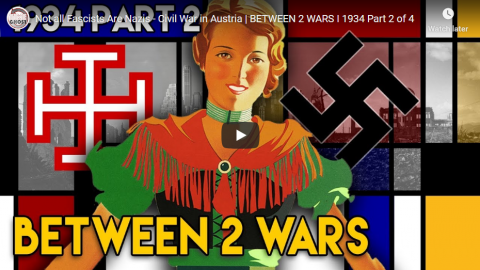TimeGhost History
Published 7 Nov 2019Austria is very divided in the 1930s. Austrian Nationalism opposes the idea of a Greater German Reich, which triggers the emergence of Austrofascism. They find themselves in a violet struggle against Nazis, Communists, Democrats and Socialists.
Join us on Patreon: https://www.patreon.com/TimeGhostHistory
Hosted by: Indy Neidell
Written by: Spartacus Olsson, Joram Appel and Francis van Berkel
Directed by: Spartacus Olsson and Astrid Deinhard
Executive Producers: Bodo Rittenauer, Astrid Deinhard, Indy Neidell, Spartacus Olsson
Creative Producer: Joram Appel
Post-Production Director: Wieke Kapteijns
Research by: Naman Habtom, Joram Appel and Francis van Berkel
Edited by: Daniel Weiss
Sound design: Marek KaminskiColorized pictures:
– Daniel Weiss,
– Julius Jääskeläinen (https://www.facebook.com/JJcolorization/),
– Dememorabilia (https://instagram.com/dememorabilia)Sources:
– Image sources: Bundesarchiv, Bundesarchiv, Bild_183-R36187/102-10358/102-00842A/102-00836/102-00840/102-00839/102-09844. Fortepan_28800(FOTOFORTEPAN MZSLOfner Károly)
– Icons from the Noun Project: School by David, college by anbileru adaleru, Law by Delwar Hossain, Parliament by Gerald Wildmoser, Diploma by Alena, guns by Cards Against Humanity, poll by Bastien Ho,A TimeGhost chronological documentary produced by OnLion Entertainment GmbH.
From the comments:
TimeGhost History
2 days ago (edited)
A lot comes together in this episode. Austria in 1934 is where a lot of political movements, ideologies and methods we saw throughout the ’20s and ’30s in previous episodes go head to head. We explain how Austro-Fascism differs from fascism and how Nazism and Austrofascism engage in a violent clash.So, this episode covers Communism, Fascism, Austrofascism and Nazism in the context of Austria in 1934. I can predict some of the comments that will appear under this video, so allow me to explain how we interpret and explain the key differences between some of these. In academia, we use a right-left axis to place political movements on based on their ideology, NOT just because of their methods or form of state. Our definition is not politically motivated or does not relate to current day politics. We only apply this definition to the specific historical context of the interwar era and World War Two. In short: totalitarian or authoritarian governments are not all the same. Fascism and Nazism are generally placed on the right because they were driven by state or race superiority, Communism and Socialism are placed on the left as they were driven by class-differences and (theoretical) equality.
Granted, there is a rich scholarly debate surrounding the function and interpretation of the left-right axis. Anyone who is interested to read more about that can read ‘Andrew Heywood, Political Ideologies: An Introduction (2017) 15-17.’ However, there are limits to what is accepted as an academic argument and what is plain propaganda. Socialism and Nazism are not the same by any respectable definition. Communism and Nazism both embracing totalitarian regimes does not make them the same. We love to engage in debates about this, and we will do so with anyone who presents a real argument with real examples and sources. We will not engage with trolls who are politicising this historical debate with a modern-day agenda.
Cheers,
Joram




